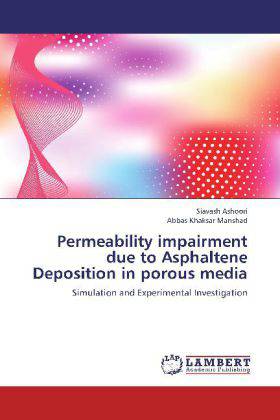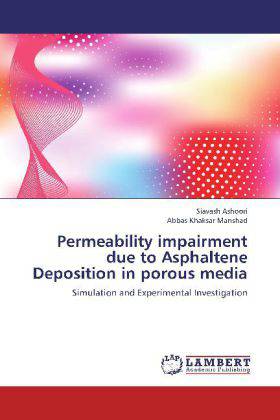
- Afhalen na 1 uur in een winkel met voorraad
- Gratis thuislevering in België vanaf € 30
- Ruim aanbod met 7 miljoen producten
- Afhalen na 1 uur in een winkel met voorraad
- Gratis thuislevering in België vanaf € 30
- Ruim aanbod met 7 miljoen producten
Zoeken
Permeability impairment due to Asphaltene Deposition in porous media
Simulation and Experimental Investigation
Siavash Ashoori, Abbas Khaksar Manshad
Paperback | Engels
€ 98,45
+ 196 punten
Omschrijving
Asphaltene precipitation is one of the most common problems faced by the oil industry throughout the world during oil production, transportation and refinery processes. In oil recovery, especially in gas injection, formation of asphaltene aggregation, following their deposition can result in plugging of the formation, well bore and production facilities and makes the process costly and sometimes uneconomical. Unfortunately, there is no predictive model for asphaltene problem treatment because the mechanisms of asphaltene precipitation and deposition are still under investigation due to their complexity. The main purpose of this book was to study the mechanisms of asphaltene deposition in a porous medium. As part of this research book, a substantial number of experiments were performed to investigate the effect of different parameters on the amount of asphaltene precipitation. A slim tube filled with glass beads was selected as synthetic porous medium and some flood tests at different temperatures, oil to solvent volume ratios and various injection rates were carried out. A mathematical model was developed for prediction of permeability impairment due to asphaltene deposition.
Specificaties
Betrokkenen
- Auteur(s):
- Uitgeverij:
Inhoud
- Aantal bladzijden:
- 340
- Taal:
- Engels
Eigenschappen
- Productcode (EAN):
- 9783659235795
- Verschijningsdatum:
- 5/09/2012
- Uitvoering:
- Paperback
- Afmetingen:
- 152 mm x 220 mm
- Gewicht:
- 499 g

Alleen bij Standaard Boekhandel
+ 196 punten op je klantenkaart van Standaard Boekhandel
Beoordelingen
We publiceren alleen reviews die voldoen aan de voorwaarden voor reviews. Bekijk onze voorwaarden voor reviews.








